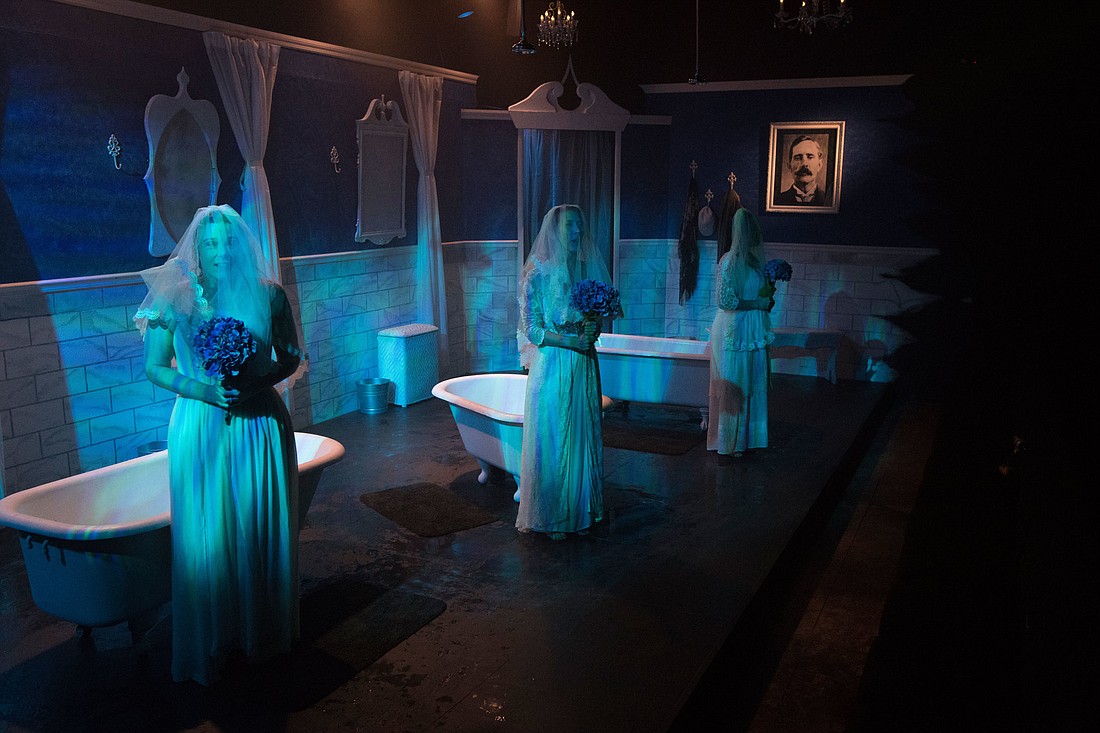- January 11, 2025
-
-
Loading

Loading

Vampires exist. Not the blood-sucking variety — users, exploiters and manipulators. People who feed on other people’s joy, life force, work and money. “The Drowning Girls” shows the impact of one of these real-life human monsters. It’s a play by three playwrights: Beth Graham, Charlie Tomlinson and Daniela Vlaskalic. Their cautionary tale is now on stage at the Urbanite Theatre.
George Joseph Smith is the monster in question — the man responsible for Britain’s “Brides in the Bath Murders” from 1912-14. He had a simple M.O. Smith would persuade a gullible woman to marry him, hand over her life savings and make him the beneficiary of a fat life-insurance policy. He’d drop references to his wife’s dizzy spells and take her to the nearest doctor. Then he’d drown her in a bathtub and cash in. Smith’s scheme worked three times, until he was caught and hanged.
It’s a three-woman play. Nicole Jeannine Smith, Katherine Michelle Tanner and Carley Cornelius bring Smith’s victims to life — at least temporarily. They supply the lines of other characters too, Smith included. But no actor plays him. The murderer’s not here, aside from the throwaway lines (spoken by women) and an oversized photograph of his mustachioed face, leering down at you like the poster of Big Brother in “1984.” The play’s real focus is the all-too-human vulnerability that made three women Smith’s victims.
Edwardian society had taught them that women without husbands were second-class citizens. Smith said he was the man for the job. He told them what they wanted to hear and became the man they wanted him to be. Until he got them in the bathtub.
It’s a real-life horror story, alright. (I kept thinking, “What would Stephen King do?”) Beth, Tomlinson and Vlaskalic distill the horror into a tight, 70-minute script. Tight, but free-form. The actors speak with overlapping dialog, finish each other’s sentences and launch into associational riffs. It’s a dense, intoxicating brew of words. King, I think, would approve.
Director Brendan Ragan pulls you into the twists and turns of this macabre tale. (A funny tale, as well. The horror’s punctuated with guilty laughter — and lots of breath-related puns.) Like Timothy Leary in that old Moody Blues song, Ragan takes you up, he takes you down and plants your feet back firmly on the ground. Then the funhouse ride ends, and you can’t believe it’s over.
But the shouts and screams of the ride stay with you. The characters stay with you. And that’s really the whole point.
Murder erases identity; individuals become generic “victims.” Playwrights, director and actors defiantly reclaim the three women’s individuality. Smith’s Bessie is naïve and all-forgiving, even after her husband from hell accuses her of giving her VD and dumps her for a year. Cornelius’ Alice is no pushover. Her mad affair is a misguided rebellion against her repressive parents. Tanner’s Margaret is pushing 40 and would rather be dead than an old maid. And hers is the only death we witness.
Ultimately, these women die, not for their sins but for their virtues. Being loving, forgiving, trusting and open makes them Smith’s perfect victims. As Eli Roth once said: No good deed goes unpunished.
Smith’s bad deeds unfold in a weird, metaphoric space. You see a deliberately unrealistic, symbolic substitute for the terrible realities you don’t see. And don’t want to.
Rew Tippin’s set is nightmarishly beautiful. Three claw-footed, white bathtubs under three shower heads, with laundry hampers and other utilitarian stuff behind them. And that creepy poster of Smith, of course. Ryan Finzelber’s lighting is also dreamy. It fits nicely with the hint that you’re watching a trial in the afterlife. Riley Leonhardt costumes speak of vulnerability and twisted love. She clothes the three Ophelias in bridal gowns that become their burial shrouds. Beauty that hints of their doom.
It’s riveting stuff, and not by the numbers. The playwrights match their creepy subject matter with unconventional form. You know how the story ends before it starts. So the playwrights don’t give you a story. You get a non-linear, free-associational fugue, instead. There’s no Aristotelian plot arc. No rising action, climax and denouement. The play shows you the minds of the victims, and that’s it. Smith’s mind remains offstage. Though you’re free to imagine it, if you want to.
It’s not a didactic play. But there are lessons to be found.
The obvious takeaway is feminist. On a surface level, it’s a cautionary tale of what happens to women who think they need men — and desperately put their lives in some man’s hands. True enough, but not the only truth. The play speaks of all human vampires. Cult leaders, politicians and femmes fatales included. So, don’t let them sink their fangs into you. And if you happen to have fangs of your own …
But why am I bringing this up?
Chances are Sarasota’s human vampires wouldn’t go to a play like this in the first place. Right?
When you get back home, check out the mirror just to be sure.